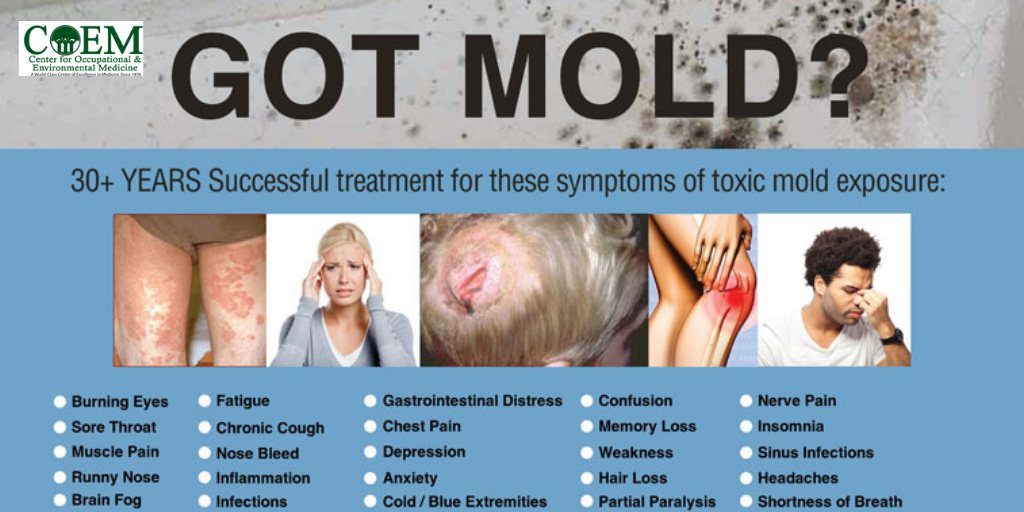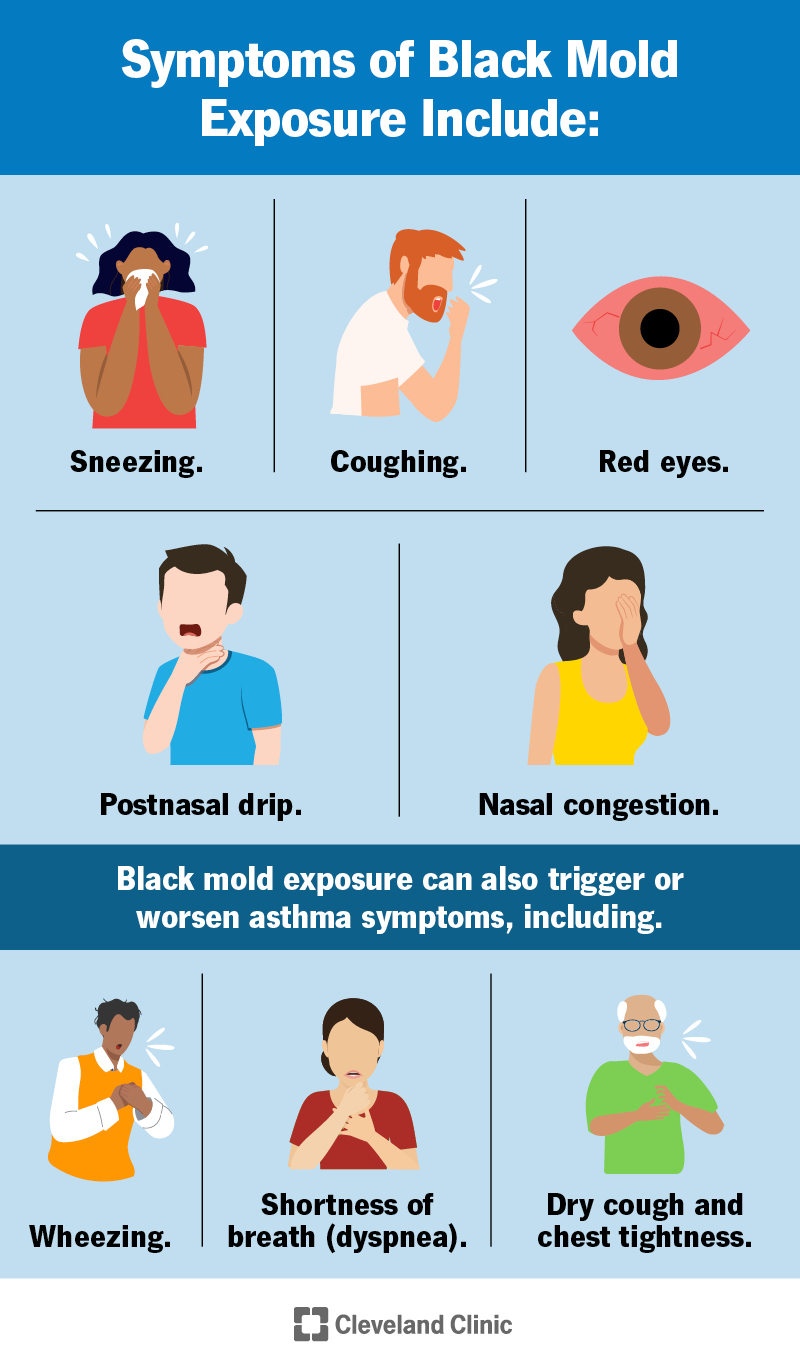In this article, we will be discussing the physical symptoms that you may experience if you are exposed to mold and how it can impact your overall well-being. We will explore common symptoms such as respiratory issues, allergic reactions, and skin irritations that can occur due to mold exposure. Additionally, we will delve into the potential long-term effects of mold on your health. By the end, you will have a better understanding of how mold can affect your physical well-being and what to look out for if you suspect mold in your environment.

Understanding Mold Exposure
Mold is a common problem that many people may encounter in their homes or workplaces. It is a type of fungus that thrives in damp and humid conditions. Mold spores are present in the air we breathe, and under the right conditions, they can grow and multiply, leading to mold growth. Understanding the sources of mold growth and how it affects indoor air quality is crucial for maintaining a healthy living environment.
What is mold?
Mold is a type of fungus that can grow both indoors and outdoors. It can be found in various colors, ranging from black, green, orange, or white. Mold reproduces by producing spores, which are tiny particles that can travel through the air. These spores are invisible to the naked eye and can be inhaled or come into contact with the skin.
Common sources of mold growth
Mold thrives in environments that have moisture and organic materials such as wood, paper, or fabric. Some common sources of mold growth include:
- Leaking pipes or roofs
- High humidity levels
- Flooding or water damage
- Poor ventilation
- Damp basements or crawl spaces
It is important to address these issues promptly to prevent mold growth and minimize the risk of exposure.
How mold affects indoor air quality
When mold spores are present in the air, they can have a negative impact on indoor air quality. Inhaling mold spores can trigger various physical symptoms and allergic reactions. Prolonged exposure to mold can lead to chronic health problems, especially for individuals with compromised immune systems or pre-existing respiratory conditions.
Recognizing Physical Symptoms of Mold Exposure
Exposure to mold can manifest in a variety of physical symptoms. These symptoms can vary from person to person and may depend on the individual’s sensitivity to mold. Some common physical symptoms of mold exposure include:
Respiratory symptoms
One of the most common physical symptoms of mold exposure is respiratory distress. This can include:
- Coughing and wheezing: Mold spores can irritate the airways, leading to persistent coughing and wheezing.
- Shortness of breath: Inhaling mold spores can cause difficulty in breathing and a sensation of tightness in the chest.
- Congestion and sinusitis: Mold spores can cause nasal congestion, sinus pressure, and inflammation.
- Asthma exacerbation: Individuals with asthma may experience worsening of their symptoms when exposed to mold.
Allergic reactions
Many people are allergic to mold, and exposure can trigger allergic reactions. Some common allergic reactions to mold include:
- Sneezing: Inhaling mold spores can stimulate the release of histamine, leading to frequent sneezing.
- Runny or stuffy nose: Mold spores can cause nasal congestion, a runny nose, or post-nasal drip.
- Itchy or watery eyes: Mold spores can irritate the eyes, causing itching, redness, and excessive tearing.
- Skin rashes: Direct contact with mold can cause skin rashes, hives, or dermatitis.
Skin irritations
Direct contact with mold can lead to various skin irritations. Some common skin irritations caused by mold include:
- Redness and itching: Touching or coming into contact with mold-infested materials can cause redness and itching of the skin.
- Burning or stinging sensations: Mold spores on the skin can cause a burning or stinging sensation.
- Skin allergies and hives: Some individuals may develop an allergic reaction to mold, leading to hives or other skin allergies.
Eye and nose irritations
Mold can also irritate the eyes and nose, leading to discomfort and inflammation. Some common eye and nose irritations caused by mold include:
- Eye redness and itching: Mold spores can irritate the eyes, causing redness, itching, and a gritty feeling.
- Watery and irritated eyes: Mold exposure can lead to excessive tearing and irritation of the eyes.
- Nasal congestion and irritation: Inhaling mold spores can cause nasal congestion, sneezing, and irritation of the nasal passages.
Mental health symptoms
In addition to physical symptoms, mold exposure can also affect mental health. Some common mental health symptoms associated with mold exposure include:
- Fatigue and chronic tiredness: Mold exposure can lead to a constant feeling of fatigue and lack of energy.
- Difficulty concentrating: Exposure to mold can affect cognitive function, making it difficult to concentrate or focus on tasks.
- Memory problems: Mold exposure may impact memory and the ability to recall information.
- Mood swings and irritability: Mold exposure can lead to changes in mood, including irritability, anxiety, or mood swings.
- Depression and anxiety: Prolonged exposure to mold can contribute to the development or worsening of depression and anxiety symptoms.

Seeking Medical Help for Mold Exposure
If you are experiencing physical symptoms of mold exposure that persist or worsen over time, it is important to seek medical help. A healthcare professional can evaluate your symptoms, conduct appropriate tests, and recommend suitable treatment options. Some situations when it is advisable to see a doctor include:
- Symptoms that do not improve with self-care measures
- Persistent respiratory distress or worsening of asthma symptoms
- Development of severe allergic reactions or skin infections
- Mental health symptoms that significantly impact daily functioning
When to see a doctor
It is advisable to see a doctor if you suspect that your physical symptoms are related to mold exposure. A healthcare professional can provide a proper assessment, diagnosis, and guidance on how to manage your symptoms effectively.
Medical tests for mold exposure
To determine if your symptoms are related to mold exposure, a doctor may recommend medical tests, such as:
- Allergy tests: Allergy testing can identify specific allergies, including mold allergies.
- Lung function tests: Lung function tests can assess the overall functioning of the respiratory system and detect any abnormalities.
- Blood tests: Blood tests can help identify any underlying immune system disorders or measure inflammatory markers.
Treatment options for mold-related symptoms
The treatment for mold-related symptoms may vary depending on the severity and specific symptoms. Some common treatment options include:
- Medications: For respiratory symptoms and allergic reactions, medications such as antihistamines, nasal sprays, or bronchodilators may be prescribed.
- Immunotherapy: Allergy shots or sublingual tablets can help desensitize individuals with mold allergies.
- Topical treatments: For skin irritations or infections, topical creams or ointments may be recommended.
- Counseling or therapy: Mental health symptoms related to mold exposure may require counseling or therapy to address anxiety, depression, or other emotional challenges.

Preventing Mold Exposure
Preventing mold growth and minimizing exposure is key to maintaining a healthy living environment. Some preventive measures include:
Controlling indoor humidity levels
Mold thrives in damp environments, so it is essential to keep indoor humidity levels in check. Use dehumidifiers in areas prone to moisture, such as basements or bathrooms. Keep the humidity level below 50% to discourage mold growth.
Proper ventilation and air circulation
Proper ventilation helps to reduce moisture and prevent stagnant air. Ensure that your home or workplace has adequate ventilation systems, especially in areas prone to dampness, like kitchens and bathrooms. Use exhaust fans and open windows regularly for air circulation.
Regular mold inspections and remediation
Regularly inspect your home or workplace for signs of mold growth, such as musty odors, water stains, or visible mold. If you detect mold, it is important to address it promptly. Mold remediation professionals can safely remove mold and address the underlying moisture issues to prevent future growth.
Conclusion
Understanding the physical symptoms of mold exposure is crucial for protecting your well-being. By recognizing and addressing these symptoms, seeking medical help, and taking preventive measures, you can minimize the negative effects of mold on your health. Remember to maintain a clean and dry living environment to prevent mold growth and promote a healthier living space for you and your loved ones. Stay proactive and prioritize your well-being by creating a mold-free environment.

